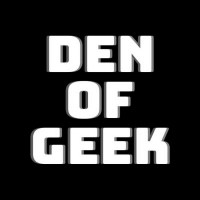How Modern Westerns Survive and Adapt
The Westerns of today are a very different breed from the classics of decades past.
Sponsored by Lionsgate. The Duel arrives in theaters and VOD on June 24th.
The Western has been around almost as long as cinema itself, with the first film Westerns appearing in the 1890s just as the concept of the movie was taking hold in the public consciousness. 1903’s The Great Train Robbery arguably cemented the Western as an official film genre. They were enormously popular in the silent film era, took a brief dip during the advent of the sound film in the 1930s, but came blasting back to life in 1939 with the arrival of movies like John Ford’s groundbreaking Stagecoach, along with Union Pacific, Destry Rides Again, Dodge City and others.
The genre stayed popular for the next 25 years or so — during the 1950s there were more Westerns produced than any other genre — but its influence and draw began to wane in the 1960s. Already the form was going through experimentation and reinvention, with the typical “good guys vs. bad guys” template beginning to give way to films in which the main characters were less heroes than anti-heroes (1956’s The Searchers being one of the most notable examples of that), Native Americans were seen as more than savages, women were given more prominent roles and American institutions and values were questioned.
Although films like Shane (1953) and Johnny Guitar (1954) were early examples of this change in thinking, it fully flowered in movies like Ride the High Country (1962), Hud (1963), Will Penny (1968), The Wild Bunch (1969), Butch Cassidy and the Sundance Kid (1969), McCabe and Mrs. Miller (1971) and The Outlaw Josey Wales (1976), along with boldly experimental outings like the spaghetti Westerns of Sergio Leone and the psychedelic, avant-garde El Topo (1970). But the film industry was changing drastically in the 1970s, and many directors at the time had little interest in the Western genre — with their feelings mirrored by those of audiences as well. As a result, the genre all but died out by the late ‘70s, with relatively few Westerns produced between 1979 and 1990 and those that were having little cultural impact.
That began to change in 1990, when Kevin Costner directed and starred in Dances with Wolves. The film, a sympathetic portrayal of the Sioux tribe and an indictment of the white man’s conquest and destruction of the West, was a huge hit with audiences and critics alike, winning the Academy Award for Best Picture and earning $424 million worldwide. The next key film to bring the Western back as a full-fledged film genre was Clint Eastwood’s Unforgiven (1992), a dark critique of several Western tropes, particularly the genre’s use of violence and the way it turned morally ambivalent actions into more glamorized myths. Like Dances with Wolves, Unforgiven won Best Picture — the second Western in three years to do so — and paved the way for a new era of modern Westerns.
With the possible exception of Costner’s Open Range (2003), which had much more in common with the classical Westerns of decades earlier — most modern Westerns have either continued to critique or upend the traditional elements of the Western, while others have sought ways — sometimes successfully, sometimes not — to combine it with other genres. The 1990s saw the arrival of films like Jim Jarmusch’s “psychedelic Western” Dead Man (1995), which pushed the genre into surreal new territory, Sam Raimi’s self-referential The Quick and the Dead (also 1995), Antonia Bird’s cannibal black comedy Ravenous (1999) and Ang Lee’s gritty, stylized Ride with the Devil (also 1999).
The revisionist approach to the genre continued in the 2000s with films like Ron Howard’s The Missing (2003), John Hillcoat’s outstanding, brutal The Proposition (2005) and Andrew Dominik’s poetic, mournful The Assassination of Jesse James by the Coward Robert Ford (2007) continuing to mine the genre for new explorations of current social topics. A harsher look at the values of the time, coupled with a more brutal, unflinching and realistic violence than had ever been seen in the Westerns of the ‘40s and ‘50s, New themes continued to find their way into the genre as well, with Kelly Reichardt creating the deliberately feminist Meek’s Cutoff in 2010 and Tommy Lee Jones directing the similarly female-centric The Homesman in 2014.
Quentin Tarantino directed the revisionist Django Unchained in 2012 and combined the Western with the locked-room mystery genre in 2015’s The Hateful Eight, while both films explored the ugly racism that was ingrained into the American frontier. Jon Favreau’s 2011 mash-up of sci-fi and Western, Cowboys and Aliens, was a bore and a flop, but S. Craig Zahler successfully combined the horror movie with the Western in last year’s truly creepy and gruesome Bone Tomahawk.
The upcoming The Duel (out August 23 on Blu-ray, DVD and Digital HD), starring Woody Harrelson and Liam Hemsworth, promises a similar bending of genres — something that is perhaps key to the Western’s continued, rugged survival.
